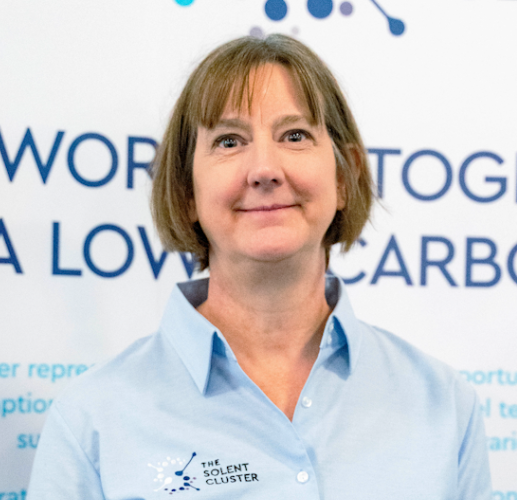As a senior geoscience advisor supporting ExxonMobil Low Carbon Solutions (LCS), one of the most fascinating aspects of my job is exploring pathways to a lower-carbon future. I have the opportunity to do that through my work identifying subsurface locations to safely, securely and permanently store captured CO2.
The energy transition is so important to our future and I’m really excited to be part of it. Capturing and storing carbon is a critical piece of the puzzle that will support the world in removing enough CO2 from the atmosphere. So, it’s fantastic to be involved with carbon storage opportunities and help society reach its net-zero ambitions.
I’ve been with ExxonMobil for nearly 30 years and have a PhD in geoscience. For most of my career, I focused on exploration geoscience: looking for oil and gas in areas like the North Sea and across South and East Africa. I’m currently based at our UK headquarters in Leatherhead, as I have been for most of my career. But I also spent five years at our Houston campus.
Carbon storage and the search for low-carbon solutions
In 2021, ExxonMobil was looking for a geoscientist to help evaluate the potential for low-carbon solutions near some of our UK facilities. That’s when I switched my focus from oil and gas exploration to evaluating the subsurface for carbon storage potential. It’s been a pretty smooth transition – the core of the job, the geoscience, doesn’t change. I’m still applying the same skills. Just to a different area, answering different questions.
The geoscience background and skills I have are completely transferable. The experience and understanding of the subsurface that I previously applied to identifying oil and gas reservoirs for exploration, I am now using to test for possible places to store carbon deep underground.
A key project I worked on with my team was securing licenses to test for possible carbon storage locations in depleted oil and gas reservoirs and saline aquifers underneath the UK North Sea. Last year, the UK completed its first-ever carbon storage licensing round and ExxonMobil was one of 14 companies awarded licenses by the North Sea Transition Authority (NSTA). We were awarded four licenses: partnering with Shell on three and with Neptune Energy on one.
We’re currently in the early stage of this process: defining storage capacity, evaluating existing seismic data, and identifying areas for further study. Securing the North Sea licenses was hugely exciting. The NSTA estimates that the locations in this initial licensing round could store up to 30 million metric tons of CO2 per year by 2030. That’s equivalent to around 10% of the UK’s annual emissions – based on 2021 figures. So, there is great potential there.
Supporting the UK’s net-zero ambitions
I’m also the subsurface lead for ExxonMobil’s participation in The Solent Cluster, a UK-based initiative that brings together a wide range of stakeholders, from local councils and academia to industry representatives like ExxonMobil. The collaboration aims to decarbonize the coastal Solent region in southern England – near ExxonMobil’s integrated petrochemical complex at Fawley. It supports the UK’s ambition to achieve net-zero emissions by 2050, focusing on solutions including low-carbon hydrogen, and carbon capture and storage.
I’m far from the only person at ExxonMobil who has made the transition from the more traditional side of the business to LCS: there is strong interest across the organization in making that move. Geoscientists are enthusiastic about being part of the energy transition and our LCS business leverages the skills and core capabilities of our people to bring low-carbon solutions to our partners and customers. Whether those solutions are centered around CCS, hydrogen, lithium or biofuels.
Developing low-carbon solutions is interesting, challenging, and central to our future and I’m excited to have the opportunity to contribute to that.
Subscribe to our newsletter for more on ExxonMobil’s work with CCS.



